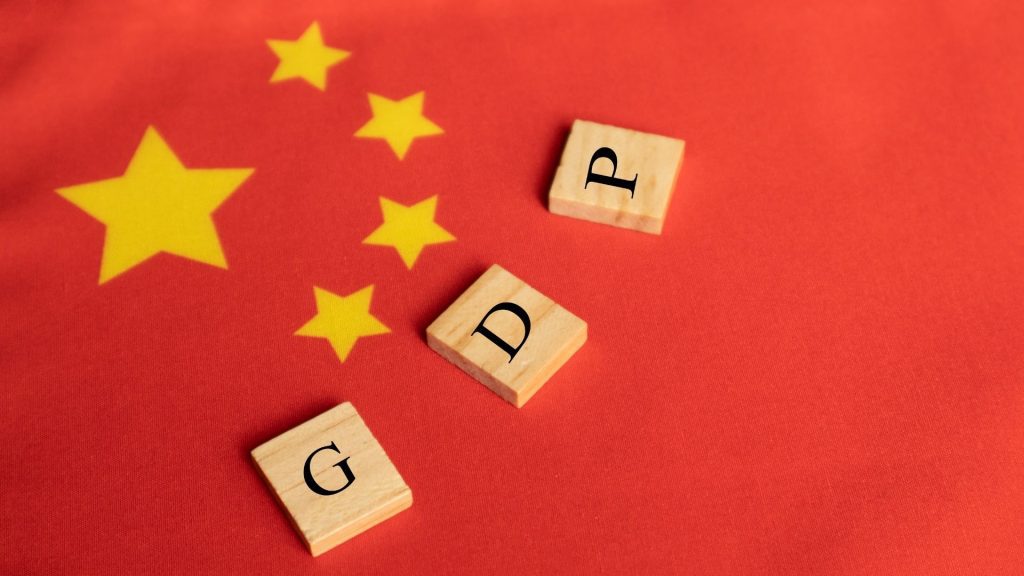China, the world’s most populous nation, has experienced remarkable economic growth in recent decades, propelling it to the forefront of the global stage.
As we delve into GDP per capita in China, in this article, we’ll explore the historical data, key drivers of economic expansion, and the influence of government policies.
Historical Data of GDP per Capita in China Growth

Source: Pexels
China’s economic journey has been nothing short of extraordinary. From the late 1970s, when economic reforms were initiated, to the present day, the nation has seen substantial changes in its GDP per capita.
Let’s embark on a journey through China’s economic history to understand how its income distribution has evolved over the years.
China’s Economic Transformation: Milestones and Changes
Over the years, China has achieved significant milestones in boosting its GDP per capita. The nation transitioned from a primarily agrarian society to an industrial and technological powerhouse.
According to Trading Economics, In 2022, China’s per capita Gross Domestic Product (GDP) stood at $11,560.33, which is approximately 92 percent of the global average.

Source: Trading Economics
We’ll examine these key turning points, including the impact of policies and economic shifts that have transformed China’s economic landscape.
Insights into the Key Drivers of China’s Economic Expansion

Source: Pexels
To comprehend the factors driving China’s remarkable economic growth, we must look at the core drivers behind its rapid development. Industrialization, urbanization, and export-oriented growth have played pivotal roles.
By exploring these key drivers, we can gain valuable insights into the forces that have propelled GDP per capita in China to new heights.
- Industrialization: A Catalyst for Economic Growth
China’s transition from an agrarian economy to a manufacturing powerhouse has played a pivotal role in boosting GDP per capita. Industrialization involves the expansion of the manufacturing sector, which results in increased production, job opportunities, and higher incomes for many.
This shift has been instrumental in transforming income distribution, pulling millions of people out of poverty by providing stable employment and improved living standards. It has led to a more equitable distribution of wealth and a notable rise in GDP per capita.
- Urbanization: Transforming Lives and Incomes
Urbanization, the process of rural-to-urban migration, has fundamentally altered China’s economic landscape. Millions of people have left rural areas in search of better opportunities in urban centers. This migration has had significant implications on GDP per capita in China and income disparities.
Urban areas generally offer higher-paying jobs and improved living conditions, contributing to an increase in the average income of the population.
However, urbanization also brings challenges, such as income disparities between rural and urban dwellers, which need to be addressed by government policies.
- Export-Oriented Growth: Global Economic Integration
China’s export-oriented growth strategy has been a key driver of its economic success. By focusing on export-led policies and international trade, China has become a major player in the global economy.
This approach has expanded its economic horizons and significantly contributed to the rise in GDP per capita. Through international trade, China has access to a wide range of global markets, increasing the demand for its products and services.
This demand, in turn, leads to increased economic activity, higher income levels, and an improved GDP per capita in China.
Government Policies and Reforms: Shaping China’s Economic Landscape

Source: Pexels
China’s government has been instrumental in influencing the nation’s economic path. Reforms, initiatives, and policies have been implemented to guide economic growth and income distribution.
Let’s delve into the role of government actions in shaping GDP per capita in China trends:
- Reform and Opening-Up: Pioneering Economic Change
The “Reform and Opening-Up” policy launched in the late 1970s, spearheaded by China’s leadership under Deng Xiaoping, paved the way for China’s economic transformation.
It shifted from a predominantly centrally planned economy to one that embraced market-oriented reforms. These reforms encompassed various economic and social life facets, from agriculture and industry to foreign trade and investment.
The policy aimed to modernize and liberalize China’s economy, moving it away from the constraints of strict state control and towards a more open and competitive economic system.
Key components of this policy included decentralization of economic decision-making, encouragement of private entrepreneurship, opening up to foreign trade and investment, and establishment of Special Economic Zones (SEZs).
These SEZs, notably Shenzhen, became laboratories for testing new economic practices and encouraging foreign investment.
The “Reform and Opening-Up” policy had a monumental impact on China’s GDP per capita. It ushered in market-oriented reforms, welcomed foreign investments and trade, and triggered a sustained period of rapid economic growth.
As a result, GDP per capita significantly increased, reflecting improved income levels and living standards for the Chinese population. This policy was crucial in lifting millions out of poverty, propelling China into a global economic powerhouse.
The rising GDP per capita reflected enhanced economic well-being, providing more job opportunities, higher incomes, and a wider range of goods and services for individuals.
- Government Initiatives: Addressing Income Disparities
To mitigate income disparities, the Chinese government has introduced several initiatives, such as poverty alleviation campaigns and rural development efforts.
- Poverty Alleviation Campaigns
China’s anti-poverty campaigns are vital for reducing income disparities. These programs provide financial aid, education, healthcare, and livelihood support to lift people from extreme poverty.
Beyond poverty reduction, they foster fairer wealth distribution and economic opportunities. This lifts incomes and living conditions in impoverished regions, positively impacting GDP per capita by expanding the middle class and raising average incomes.
- Rural Development Efforts
To tackle rural-urban income gaps, China’s government promotes rural development. This includes boosting agriculture, infrastructure, and jobs in rural areas.
These efforts elevate rural incomes, narrowing the urban-rural income divide. As a result, they contribute to better GDP per capita in China trends by improving the livelihoods of a significant portion of the population.
- Poverty Alleviation Campaigns
These government initiatives impact GDP per capita in China in two ways. They directly enhance incomes and living standards, raising the GDP per capita.
Additionally, they promote fairer wealth distribution, which stabilizes the economy. A widespread income increase, rather than wealth concentrated among a few, fosters sustainable economic growth and stability.
These initiatives address income disparities and bolster the nation’s overall economic well-being.
- Future Policies and Implications
As China continues to evolve economically, we’ll assess the potential impact of future government policies on income distribution and GDP per capita. What lies ahead for China’s economic growth, and how will it affect its population?
In short, the future of China’s economy and its impact on income distribution and GDP per capita is deeply entwined with the direction of government policies. These policies must navigate a complex web of domestic, global, social, and environmental factors.
Careful consideration of these elements is essential in ensuring that China’s continued economic growth benefits its population by providing more equitable income distribution and improved living standards.
Monitoring and analyzing these future policy developments will be of paramount importance to economists, policymakers, and anyone interested in China’s economic future.
Navigating China’s Economic Growth: The Road Ahead
In our journey through GDP per capita in China, we’ve witnessed the nation’s remarkable transformation. With insights into historical data, key growth drivers, and the influence of government policies, we’re better equipped to understand China’s economic path.
As the nation navigates the road ahead, we’ll watch its economic progress, anticipating the implications for both the Chinese population and the global community.
Explore Investment Opportunities in China with Hi-Fella
China’s dynamic economy offers a plethora of investment opportunities. Whether you’re an investor or a business professional looking to expand, consider exploring China’s thriving markets.
Hi-Fella can be your gateway to connecting with potential partners and seizing opportunities in the Chinese market. Trade globally and explore China’s market with Hi-Fella!








